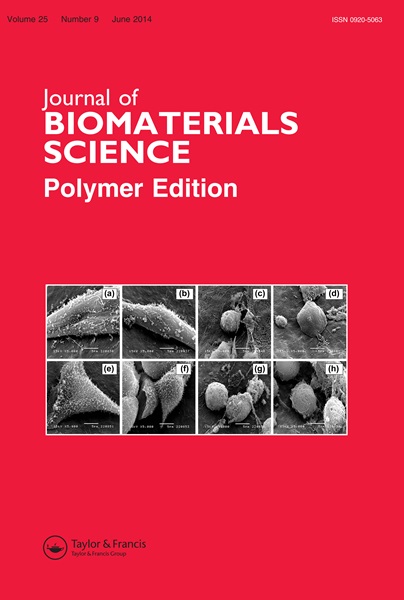Nanomaterial-functionalized electrospun scaffolds for tissue engineering.
IF 3.6
4区 医学
Q2 ENGINEERING, BIOMEDICAL
Journal of Biomaterials Science, Polymer Edition
Pub Date : 2024-09-11
DOI:10.1080/09205063.2024.2399909
引用次数: 0
Abstract
Tissue engineering has emerged as a biological alternative aimed at sustaining, rehabilitating, or enhancing the functionality of tissues that have experienced partial or complete loss of their operational capabilities. The distinctive characteristics of electrospun nanofibrous structures, such as their elevated surface-area-to-volume ratio, specific pore sizes, and fine fiber diameters, make them suitable as effective scaffolds in tissue engineering, capable of mimicking the functions of the targeted tissue. However, electrospun nanofibers, whether derived from natural or synthetic polymers or their combinations, often fall short of replicating the multifunctional attributes of the extracellular matrix (ECM). To address this, nanomaterials (NMs) are integrated into the electrospun polymeric matrix through various functionalization techniques to enhance their multifunctional properties. Incorporation of NMs into electrospun nanofibrous scaffolds imparts unique features, including a high surface area, superior mechanical properties, compositional variety, structural adaptability, exceptional porosity, and enhanced capabilities for promoting cell migration and proliferation. This review provides a comprehensive overview of the various types of NMs, the methodologies used for their integration into electrospun nanofibrous scaffolds, and the recent advancements in NM-functionalized electrospun nanofibrous scaffolds aimed at regenerating bone, cardiac, cartilage, nerve, and vascular tissues. Moreover, the main challenges, limitations, and prospects in electrospun nanofibrous scaffolds are elaborated.用于组织工程的纳米材料功能化电纺支架。
组织工程已成为一种生物替代方法,旨在维持、恢复或增强部分或完全丧失功能的组织的功能。电纺纳米纤维结构具有独特的特性,如较高的表面积-体积比、特定的孔径和细纤维直径,因此适合作为组织工程中的有效支架,能够模拟目标组织的功能。然而,电纺纳米纤维,无论是从天然或合成聚合物或其组合中提取,往往都无法复制细胞外基质(ECM)的多功能属性。为了解决这个问题,人们通过各种功能化技术将纳米材料(NMs)整合到电纺聚合物基质中,以增强其多功能特性。将纳米材料融入电纺纳米纤维支架具有独特的功能,包括高表面积、优异的机械性能、成分多样性、结构适应性、优异的多孔性以及促进细胞迁移和增殖的更强能力。本综述全面概述了各种类型的 NM、将 NM 集成到电纺纳米纤维支架中的方法,以及 NM 功能化电纺纳米纤维支架在再生骨、心脏、软骨、神经和血管组织方面的最新进展。此外,还阐述了电纺纳米纤维支架面临的主要挑战、局限性和前景。
本文章由计算机程序翻译,如有差异,请以英文原文为准。
求助全文
约1分钟内获得全文
求助全文
来源期刊

Journal of Biomaterials Science, Polymer Edition
工程技术-材料科学:生物材料
CiteScore
7.10
自引率
5.60%
发文量
117
审稿时长
1.5 months
期刊介绍:
The Journal of Biomaterials Science, Polymer Edition publishes fundamental research on the properties of polymeric biomaterials and the mechanisms of interaction between such biomaterials and living organisms, with special emphasis on the molecular and cellular levels.
The scope of the journal includes polymers for drug delivery, tissue engineering, large molecules in living organisms like DNA, proteins and more. As such, the Journal of Biomaterials Science, Polymer Edition combines biomaterials applications in biomedical, pharmaceutical and biological fields.
 求助内容:
求助内容: 应助结果提醒方式:
应助结果提醒方式:


